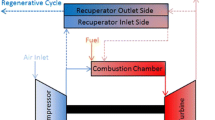Abstract
Experiments were conducted to study the effects of micro-pin-fins on boiling phenomena and heat transfer from square simulated silicon chips immersed in a pool of FC-72. Two kinds of micro-pin-fins having fin thickness of 30 μm and fin heights of 60 and 200 μm, respectively, were fabricated on the silicon chip surface with the dry etching technique. The experiments were conducted at the liquid subcoolings of 3, 25, 35 and 45 K. The effects of dissolved air in FC-72 and chip orientation were also investigated. The boiling curve of the micro-pin-finned chips was characterized by a very small increase in wall superheat with increasing heat flux, and the wall temperatures at the CHF point for all the micro-pin-finned chips were less than the upper limit for the reliable operation of LSI chips (Tw=85°C). Liquid subcooling was very effective in elevating CHF for the micro-pin-finned chips compared to the smooth surface and other treated surfaces. The enhanced boiling heat transfer mechanisms for the micro-pin-finned chips were discussed.
















Similar content being viewed by others
References
Nelson LA, Sekhon KS, Fritz JE (1978) Direct heat pipe cooling of semiconductor devices. In: Proceedings of the 3rd international heat pipe conference, CA, USA, pp 373–376
You SM (2001) Thermal management of high-power microelectronics. In: Proceedings of the 2001 IAMS international seminar, pp1–2
Messina AD, Park EL (1981) Effects of precise arrays of pits on nucleate boiling. Int J Heat Mass Transfer 24:141–145
Anderson TM, Mudawar I (1989) Microelectronic cooling by enhanced pool boiling of a dielectric fluorocarbon liquid. ASME J Heat Transfer 111:752–759
Chowdhury SKR, Winterton RHS (1985) Surface effects in pool boiling. Int J Heat Mass Transfer 28:1881–1889
Oktay S, Schmeckenbecher A (1972) A method for forming heat sinks on semiconductor device chips. US Patent 3,706,127
Chu RC, Moran KP (1977) Method for customizing nucleate boiling heat transfer from electronic units immersed in dielectric coolant. US Patent 4,650,507
Nakayama W, Daikoku T, Nakajima T (1982) Effects of pore diameters and system pressure on saturated pool nucleate boiling heat transfer from porous surfaces. ASME J Heat Transfer 104:286–291
Kubo H, Takamatsu H, Honda H (1999) Effects of size and number density of micro-reentrant cavities on boiling heat transfer from a silicon chip immersed in degassed and gas-dissolved FC-72. Enhanced Heat Transfer 6:151–160
You SM, Simon TW, Bar-Cohen A (1992) A technique for enhancing boiling heat transfer with application to cooling of electron equipment. IEEE Trans CHMT 15:823–831
O’Connor JP, You SM, Price DC (1995) Thermal management of high power microelectronics via immersion cooling. IEEE Trans CPMT 18:656–663
O’Connor JP, You SM (1995) A painting technique to enhance pool boiling heat transfer in saturated FC-72. ASME J Heat Transfer 117:387–393
O’Connor JP, You SM, Chang JY (1996) Gas saturated pool boiling heat transfer from smooth and microporous surfaces in FC-72. ASME J Heat Transfer 118:662–667
Chang JY, You SM (1996) Heat orientation effects on pool boiling of micro-porous-enhanced surfaces in saturated FC-72. ASME J Heat Transfer 118:937–943
Chang JY, You SM (1997) Enhanced boiling heat transfer from micro-porous surfaces: effects of a coating composition and method. Int J Heat Mass Transfer 40:4449–4460
Mudawar I, Anderson TM (1989) High flux electronic cooling by means of pool boiling-Part I; parametric investigation of the effects of coolant variation, pressurization, subcooling and surface sugmentation. Heat Transfer Electron ASME-HTD 111:25–34
Rainey KN, You SM, Lee S (2003) Effect of pressure, subcooling, and dissolved gas on pool boiling heat transfer from microporous surfaces in FC-72. ASME J Heat Transfer 125:75–83
You SM, Simon TW, Bar-Cohen A (1995) Effects of dissolved gas content on pool boiling of a highly wetting fluid. ASME J Heat Transfer 117:687–692
Honda H, Takamatsu H, Wei JJ (2002) Enhanced boiling of FC-72 on silicon chips with micro-pin-fins and submicro-scale roughness. ASME J Heat Transfer 124:383–390
Honda H, Takamatsu H, Wei JJ (2003) Enhanced boiling heat transfer from silicon chips with micro-pin-fins immersed in FC-72. J Enhanced Heat Transfer 10(2):211–223
Kline SJ, McClintock FA (1953) Describing uncertainties in single sample experiments. Mech Eng 75:3–8
Wei JJ (2002) Experimental study on enhanced boiling heat transfer from silicon chips with micro-pin-fins and submicron-scale roughness. PhD dissertation, Kyushu University
Fishenden M, Saunders OA (1950) An introduction to heat transfer. Oxford University Press, New York
Chapman AJ (1960) Heat transfer. Macmillan, New York
Webb RL (1983) Nucleate boiling on porous coated surfaces. Heat Transfer Eng 4:71–82
Acknowledgments
We are grateful to Dr. Yasuo Kawaguchi of the National Institute of Advanced Industrial Science and Technology (Japan), for his invaluable advices and Dr. Brian J. Nickerson at Pace University (USA) for his warm-hearted review of the paper for grammar, style, and syntax. J.J. Wei would like to thank the Japanese Ministry of Education, Culture, Sports, Science and Technology for financial support via the Monbusho Scholarship, which helped to carry out this research leading to a PhD degree.
Author information
Authors and Affiliations
Corresponding author
Rights and permissions
About this article
Cite this article
Wei, J.J., Guo, L.J. & Honda, H. Experimental study of boiling phenomena and heat transfer performances of FC-72 over micro-pin-finned silicon chips. Heat Mass Transfer 41, 744–755 (2005). https://doi.org/10.1007/s00231-005-0633-x
Received:
Accepted:
Published:
Issue Date:
DOI: https://doi.org/10.1007/s00231-005-0633-x




